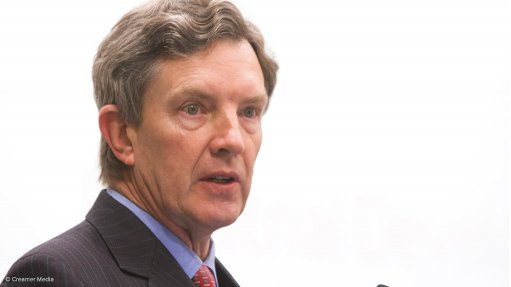
Necsa chairperson Dr Kelvin Kemm
Photo by: Duane Daws/Creamer Media
The South African government is looking at securing a local content level of 50% in the country’s proposed new nuclear power plant (NPP) programme. This was stated on Tuesday by South African Nuclear Energy Corporation (Necsa) board chairperson Dr Kelvin Kemm at a press briefing at the Necsa complex at Pelindaba, west of Pretoria. “For [the] Koeberg [NPP] there was no localisation requirement, but 43% was achieved,” he highlighted.
Regarding the likely cost of the new programme, still officially intended to construct 9.6 GW of new nuclear generating capacity, Kemm affirmed that the most detailed analyses undertaken had indicated that it would be around R650-billion. And 50% local content would mean that half this figure would be spent in South Africa. No one had yet, despite his requests, been able to provide him with any analyses supporting the widely publicised figure of R1-trillion as the cost of the new NPPs.
“We’re not going to buy these NPPs all at once,” stressed Necsa CEO Phumzile Tshelane at the same briefing. “By the end of the programme you’ll find that the programme is funding itself.” The programme should see the construction of three new NPPs with a total (depending on the design chosen) of six to nine reactors. By the time construction of the third NPP began, the first would be operational and generating income. This income stream from the first NPP could be used as collateral to refinance the NPP programme, reducing its costs.
“Necsa has conducted a preliminary new build readiness assessment for the planned nuclear reactor fleet,” he reported. “We will be the anchor for [local] nuclear manufacturing.” The corporation would support other local companies entering the nuclear manufacturing sector, as well as doing some manufacturing itself. Necsa already has ASME III N Stamp and ASME VIII U Stamp certification for nuclear manufacturing and can provide training for scientists, engineers, technicians and artisans. Nuclear manufacturing activities at Pelindaba started as long ago as 1962 and continue today.
“I think 50% [localisation] is achievable,” Kemm told Engineering News Online. “I think the ideal level would be 50%, 60%, producing some products very well and exporting them to the world, and buying [other products] from others [abroad] and collaborating with others.”
“As a nation, we need to build up our own self-confidence,” he asserted. “We have a large number of highly competent companies scattered across the country who do not realise they can get involved in nuclear. It must be a major private enterprise project.”
(Dr Kemm is also a columnist for Engineering News.)